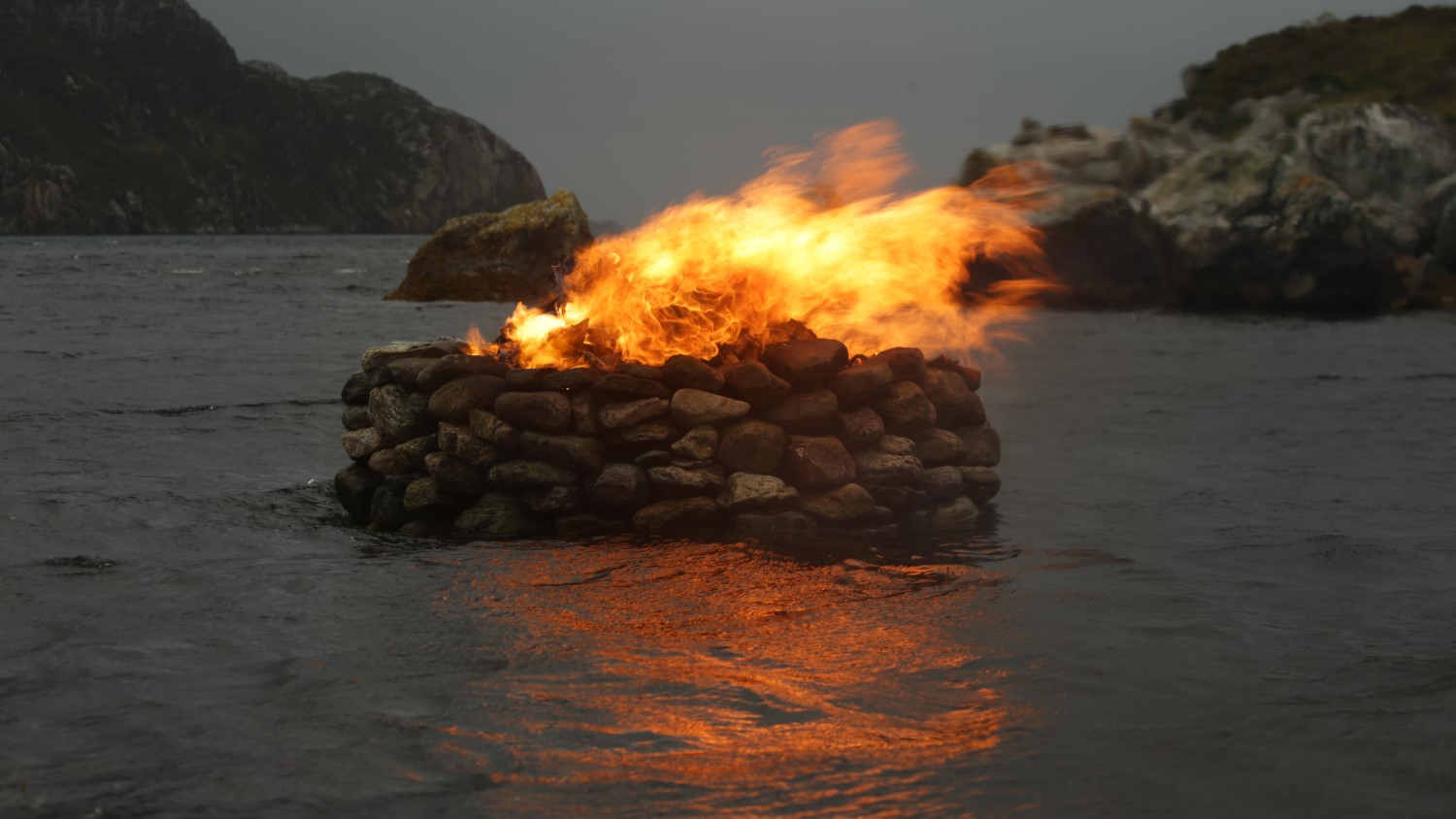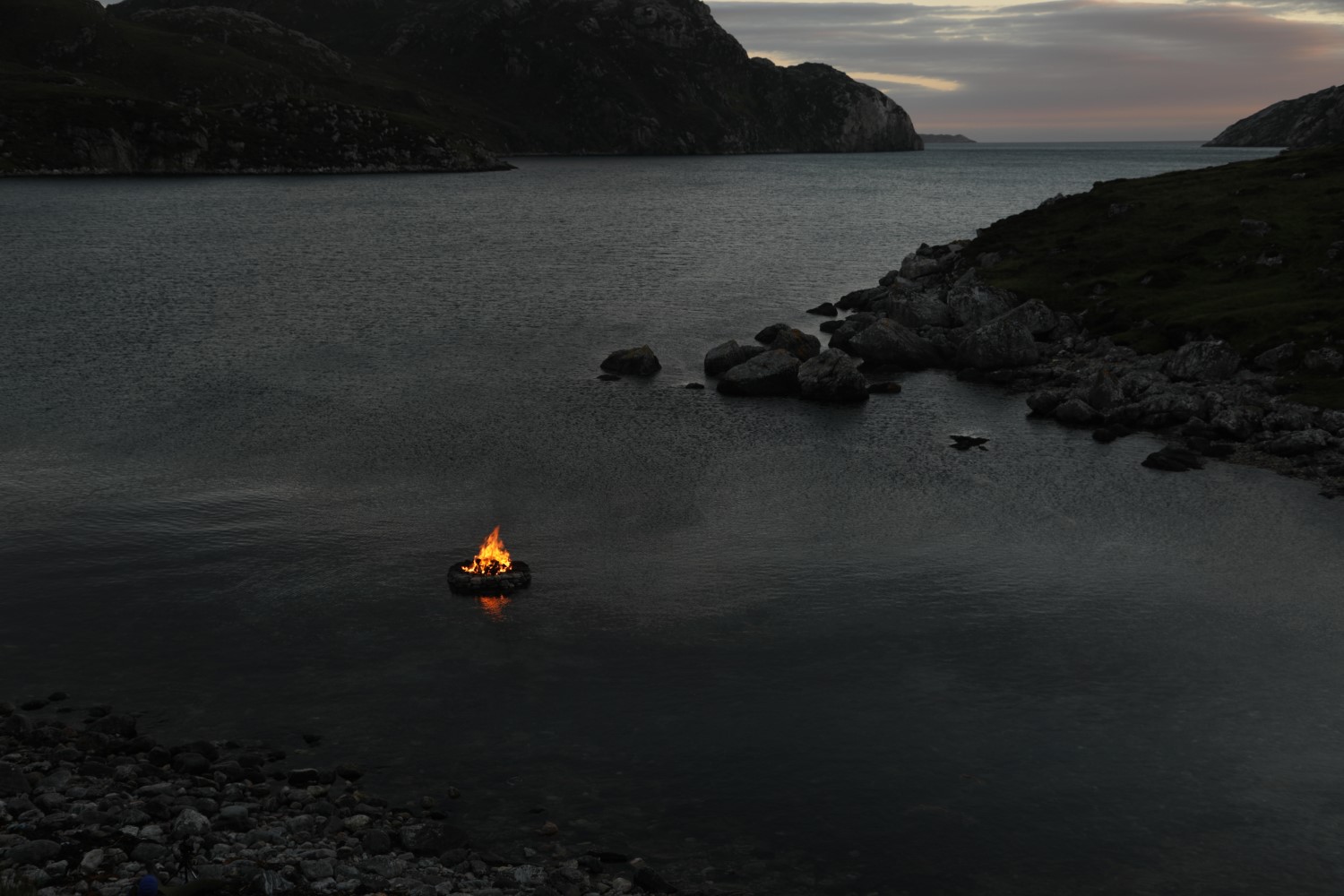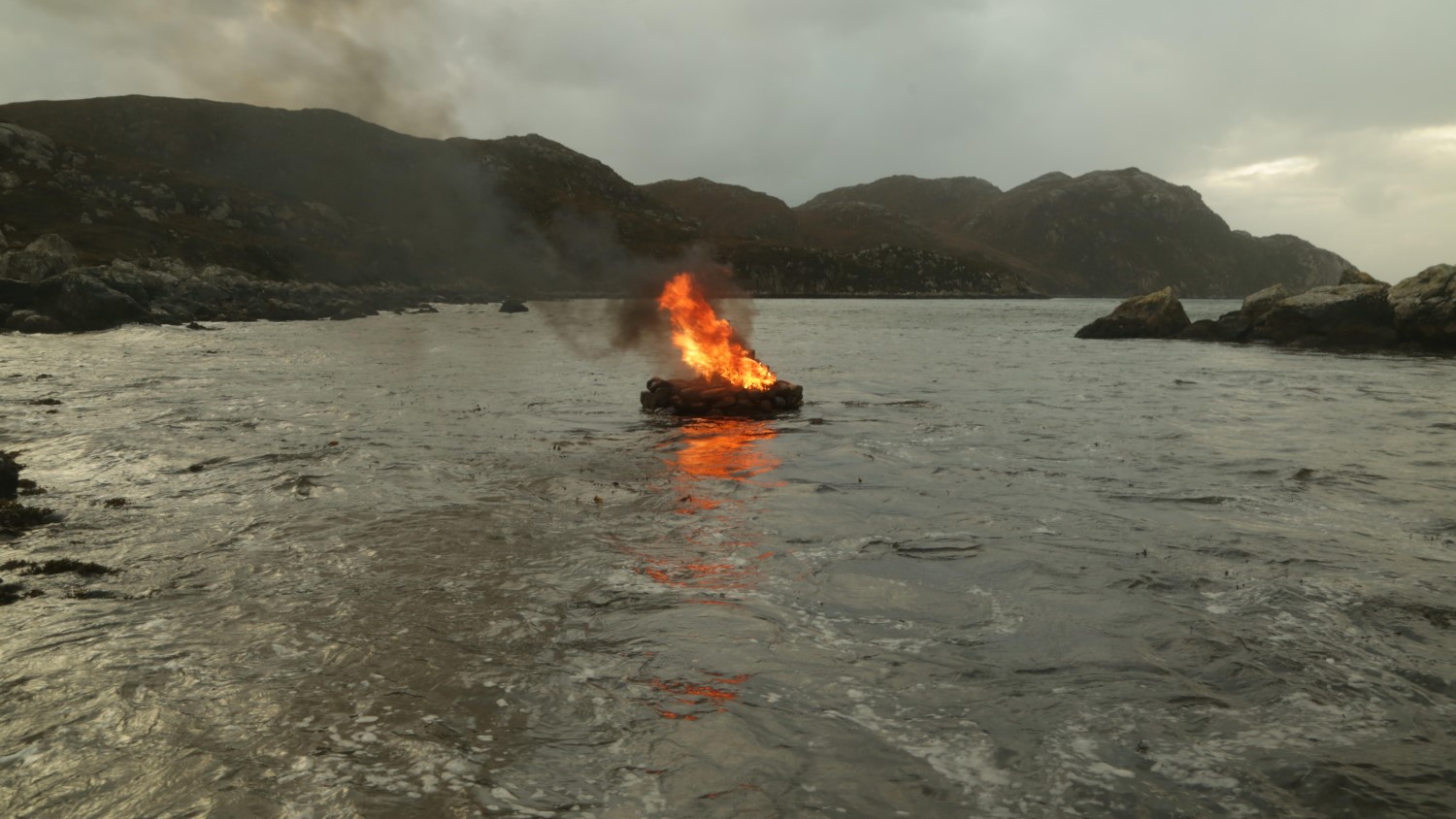
Julie Brook travels to remote regions and spends set periods of time in them, either alone or with local guides. These places are usually quite solitary and inhospitable, from caves in the Hebrides to Libyan deserts. From there she makes art reconnecting us with the natural world when that connection is being threatened, though it happens out of sight.
In the early nineties, Brook went to the remote island of Jura on the west coast of Scotland to paint and draw, using the solitude as part of her art. But there, while living in a natural stone arch, collecting water to drink and fuel to cook her food, she came to the conclusion that it would be more faithful to build art using what the island had to offer. So she used rocks that she found to build cairns on the shore, and wood that she found to set fires in them as the tide came in.

The result was a series of multi-sensory sculptures made from the elements themselves: the crackling of the fire, the explosion of a wave going over the top of a stack, the resultant smoke, the light-show on the water’s surface which changed according to the sea level. As they were quenched, Brook would wade or raft through the freezing water with buckets of wood to refire them until they were completely destroyed. The process, and the endurance it involved, was also a part of the work: the repeated action for a few hours a day, every day, for an extended period of time. Building, firing; refiring, rebuilding. Not to mention the psychological strain of living alone, and the frustration of the sea taking back what has been made.
“Brook’s Firestacks are works that we feel could have been made at any time in the past 5000 years, but they have had their pertinence refreshed by the current focus we are putting on the environment”
Twenty-five years after their original creation, having been asked to recreate a Firestack for a BBC documentary, Brook realized the potential they still had, and has been making them since, seasonally. It’s land art that feels somehow more private and personal than massive designs that are meant to last forever, or even ephemeral pieces by the likes of Andy Goldsworthy that you could walk past and not notice, unless you were seeking them out. They often only last for a few hours.

Our connection to the natural world is being dimmed as our connection to the digital world takes hold. But in Brook’s work there’s a sense of folklore that remains persistent, which we still don’t really know the meaning of. We can’t quite forsake this elemental thing. We no longer have pagan burials at sea, with heroes consigned to burping ships. But we do still light bonfires and set fireworks. We still gather round, and get mesmerized by, the campfire, which remains part of our festivities. Brook’s Firestacks are works that we feel could have been made at any time in the past 5000 years, but they have had their pertinence refreshed by the current focus we are putting on the environment. When the tide comes in her artwork has to make its own case against the elements, just as we, in the age of dawning climate change, might still have to.





